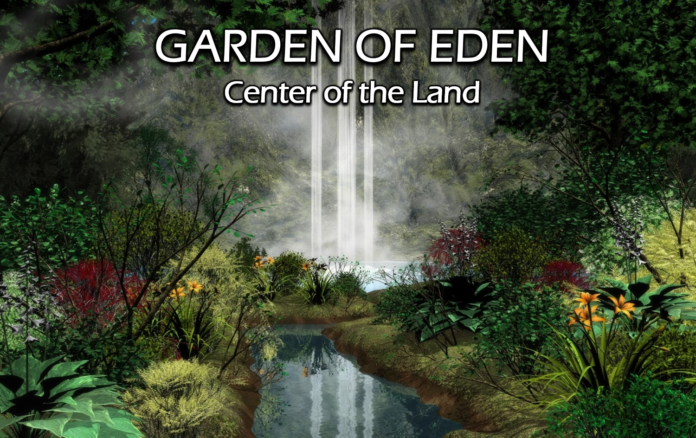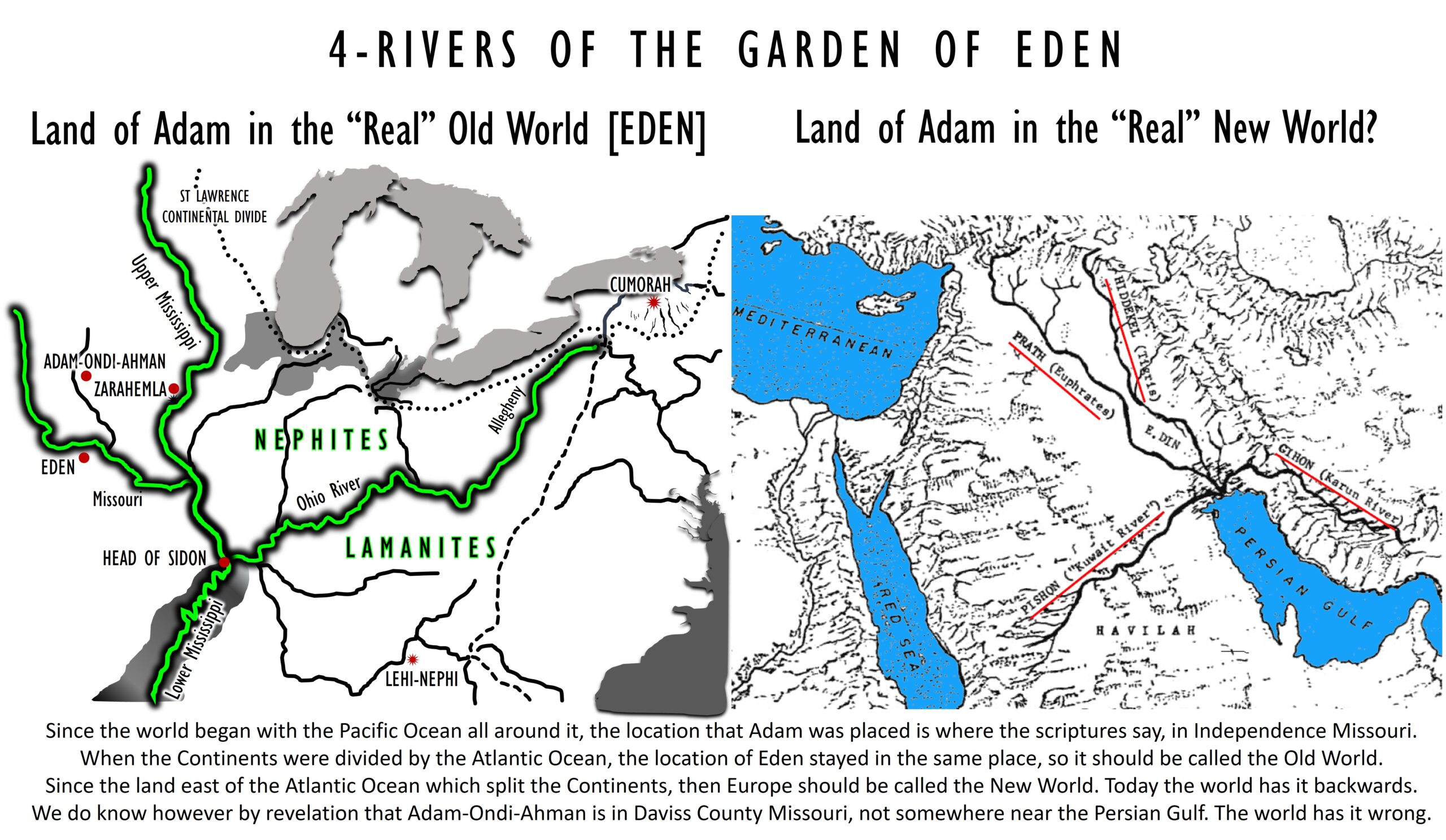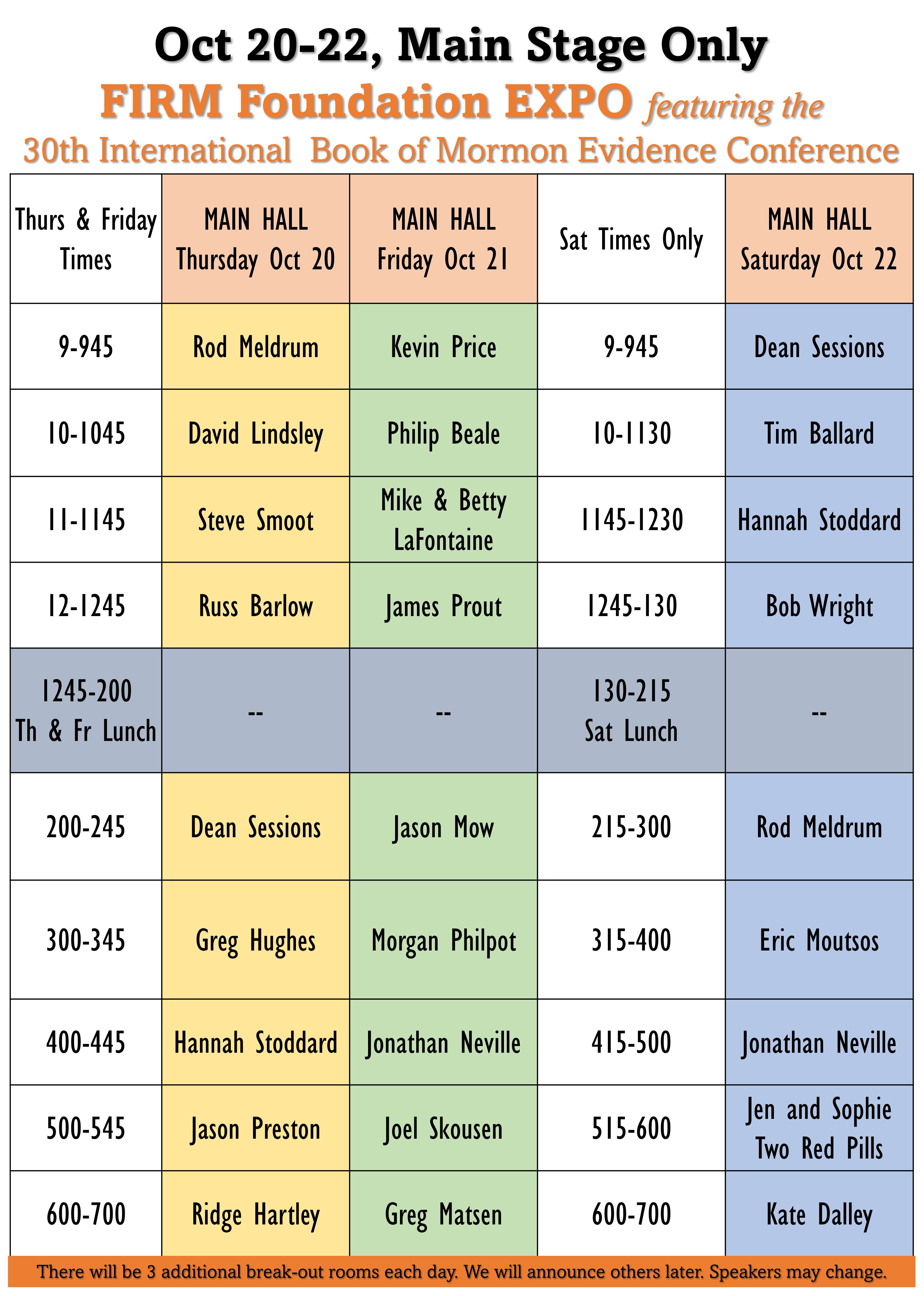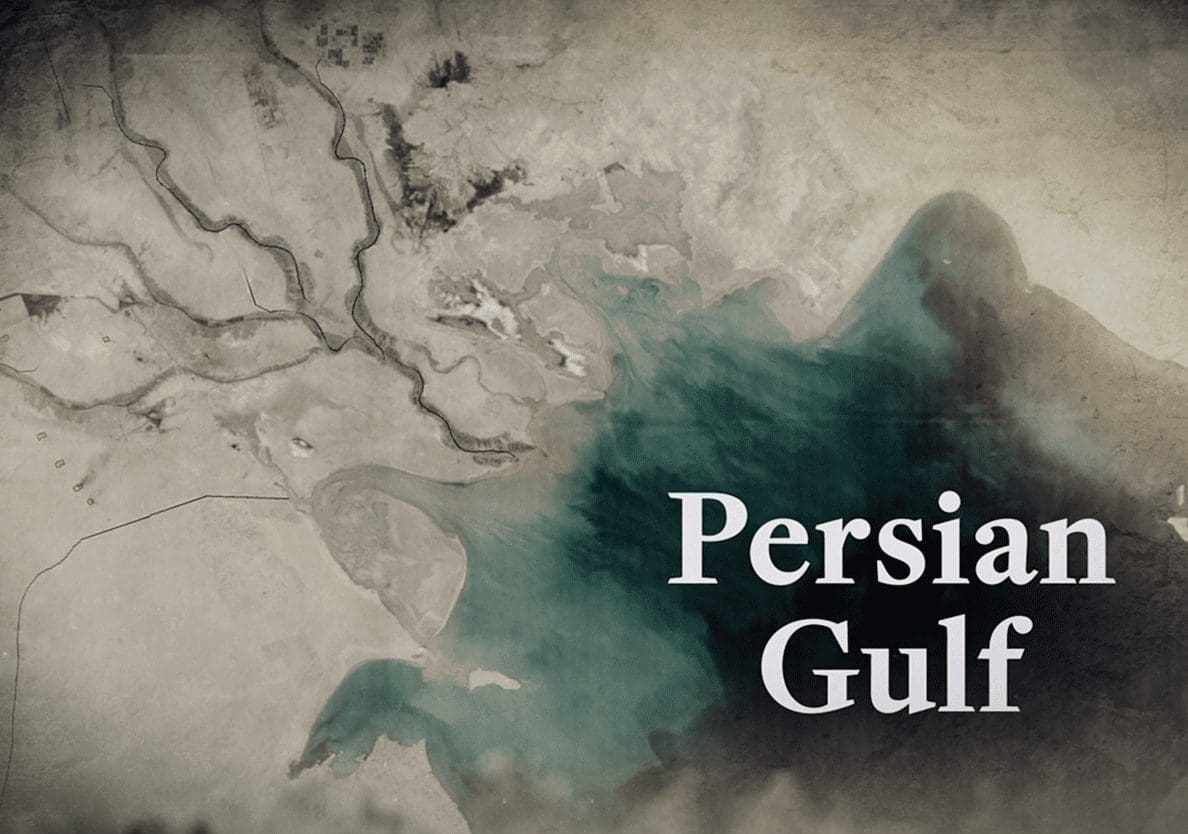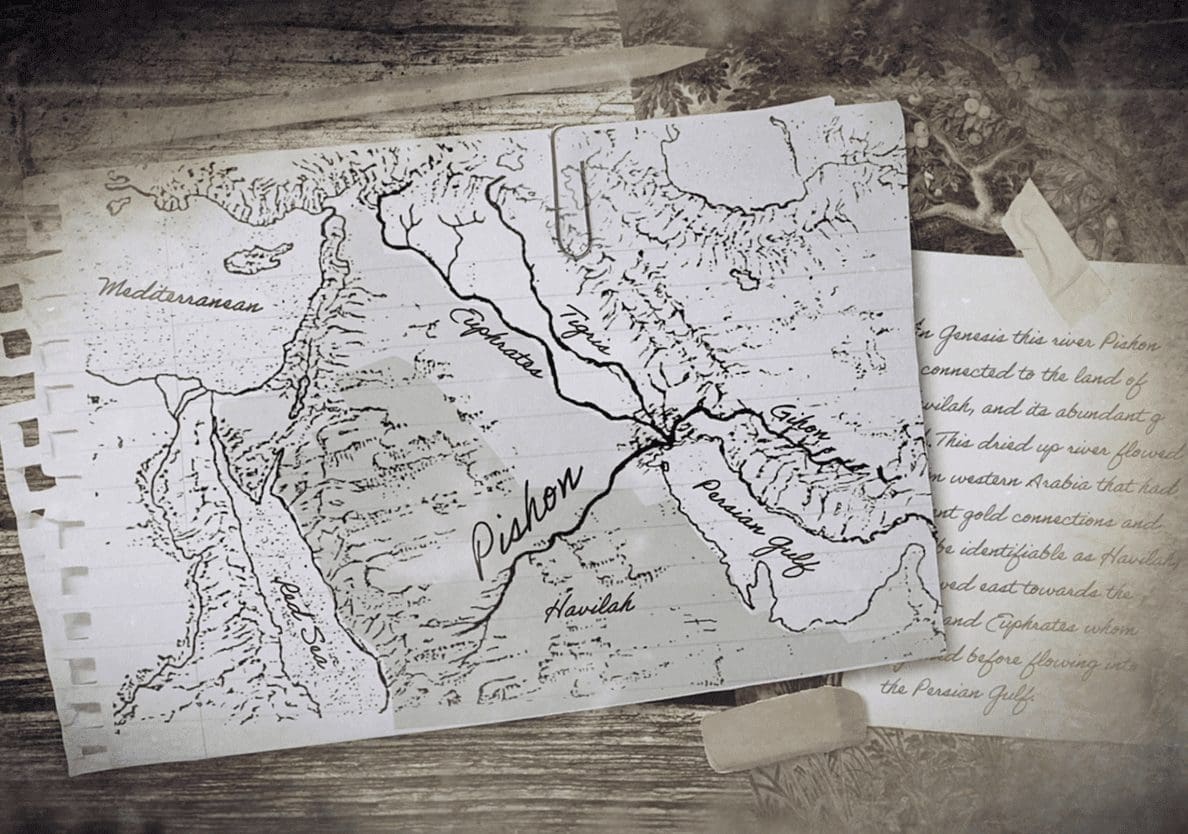4-Main US Rivers:
Lower Mississippi, Upper Mississippi, Ohio/Allegheny, Missouri.
“Mississippi can be translated as “Father of Waters”
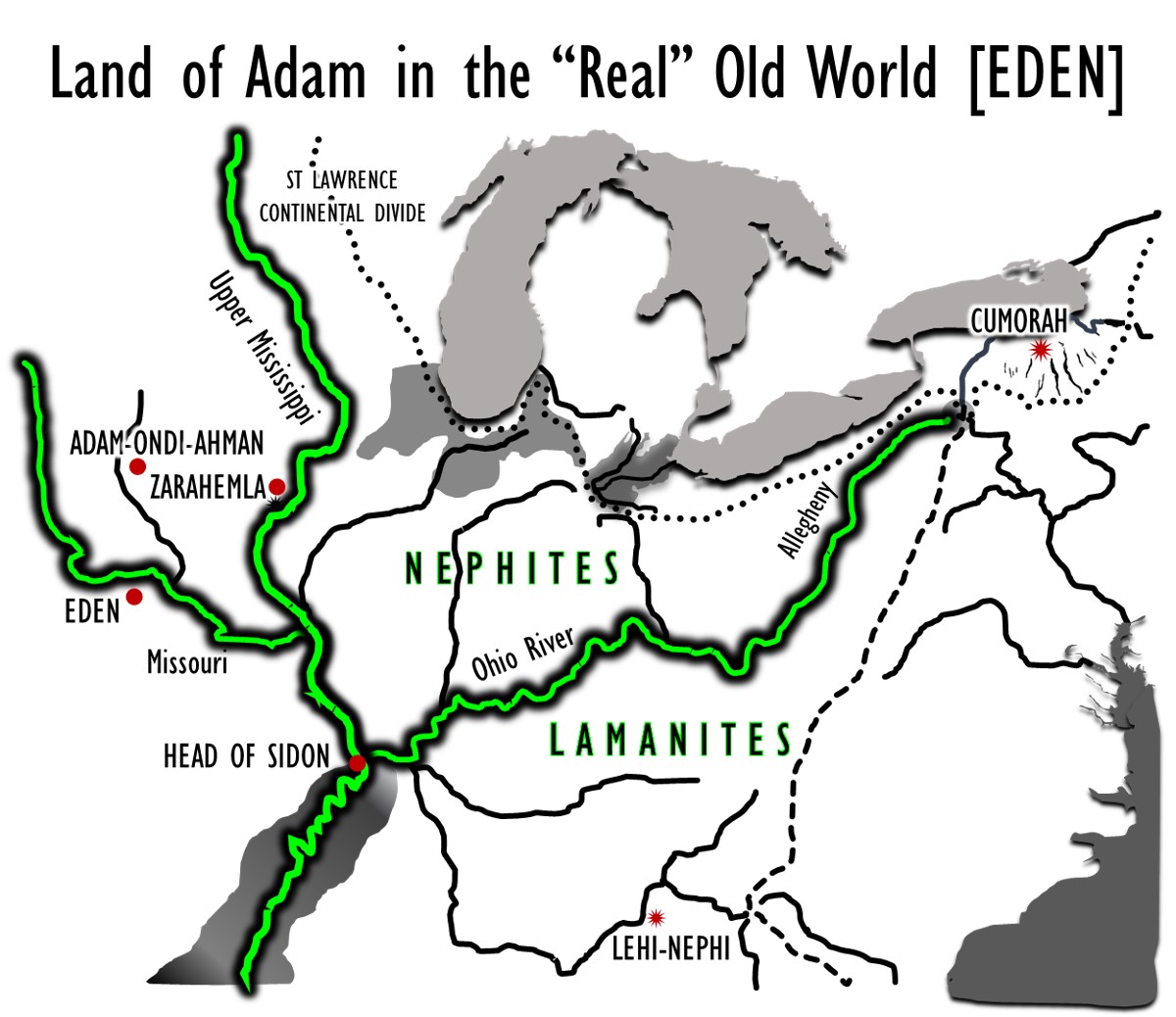 The Ohio River begins at Pittsburg as the Allegheny River flows south from Gold, PA to the Ohio. The Missouri has a confluence with the Mississippi near St Louis, MO
The Ohio River begins at Pittsburg as the Allegheny River flows south from Gold, PA to the Ohio. The Missouri has a confluence with the Mississippi near St Louis, MO
There are actually two main rivers in North America that probably are the 4 rivers of the Garden of Eden. What do I mean?
“Temporarily, we call it America. But it began with the single, primeval continent of Genesis, and the miracle of millennial healing will bring that unity again.” A Promised Land by Jeffrey R. Holland June 1976 Ensign
”And Enos lived ninety years, and begat Cainan. And Enos and the residue of the people of God came out from the land, which was called Shulon, and dwelt in a land of promise, which he called after his own son, whom he had named Cainan.” Moses 6:17
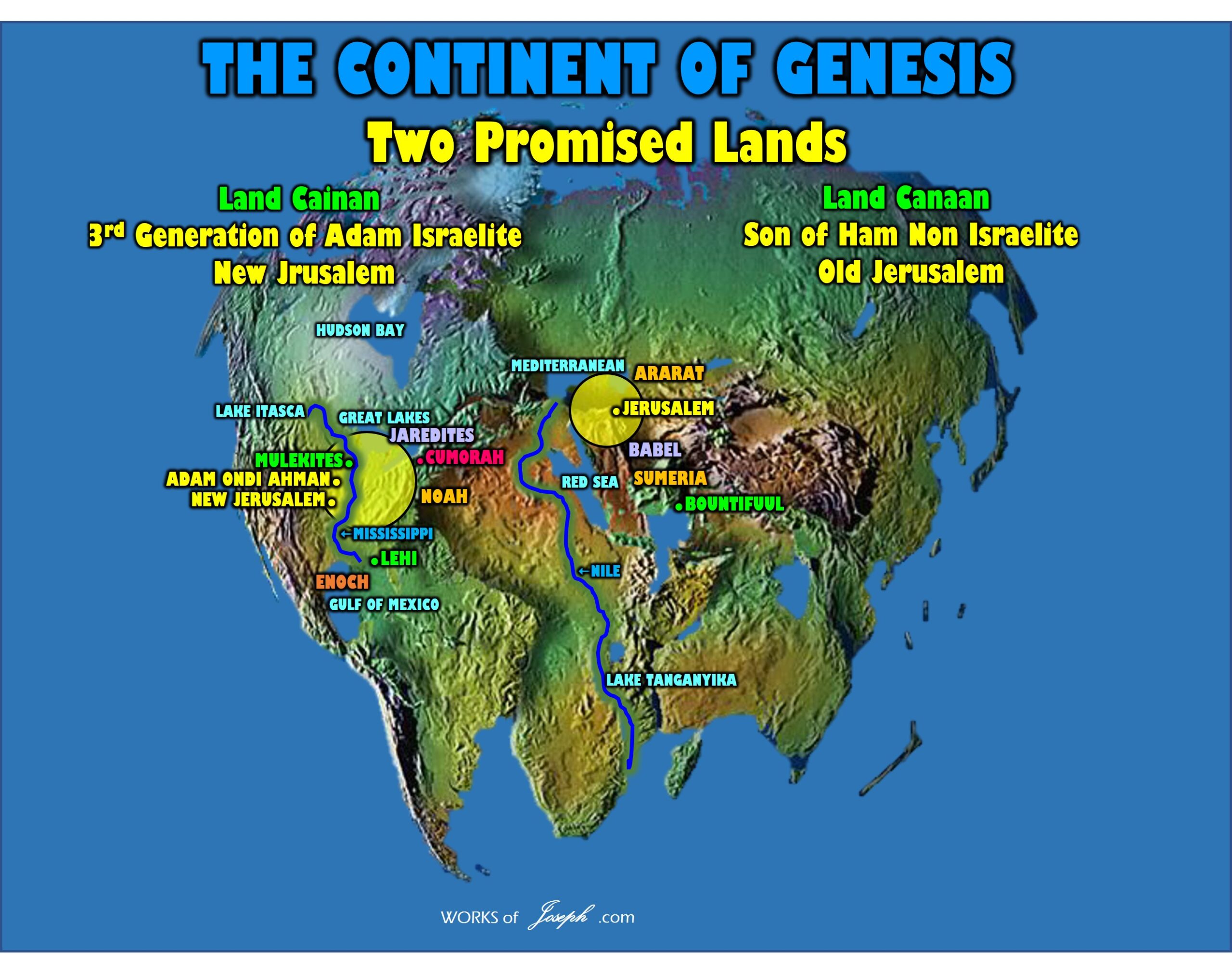
The First land of Promise was right where Adam was placed, the Garden of Eden in the area of Missouri. Back then the land was whole and not broken apart and the Ocean was surrounding the earth. As you can see in the map above, the distance from what we call Missouri to what we call today of Jerusalem is much shorter of a distance than with the Atlantic ocean between them.
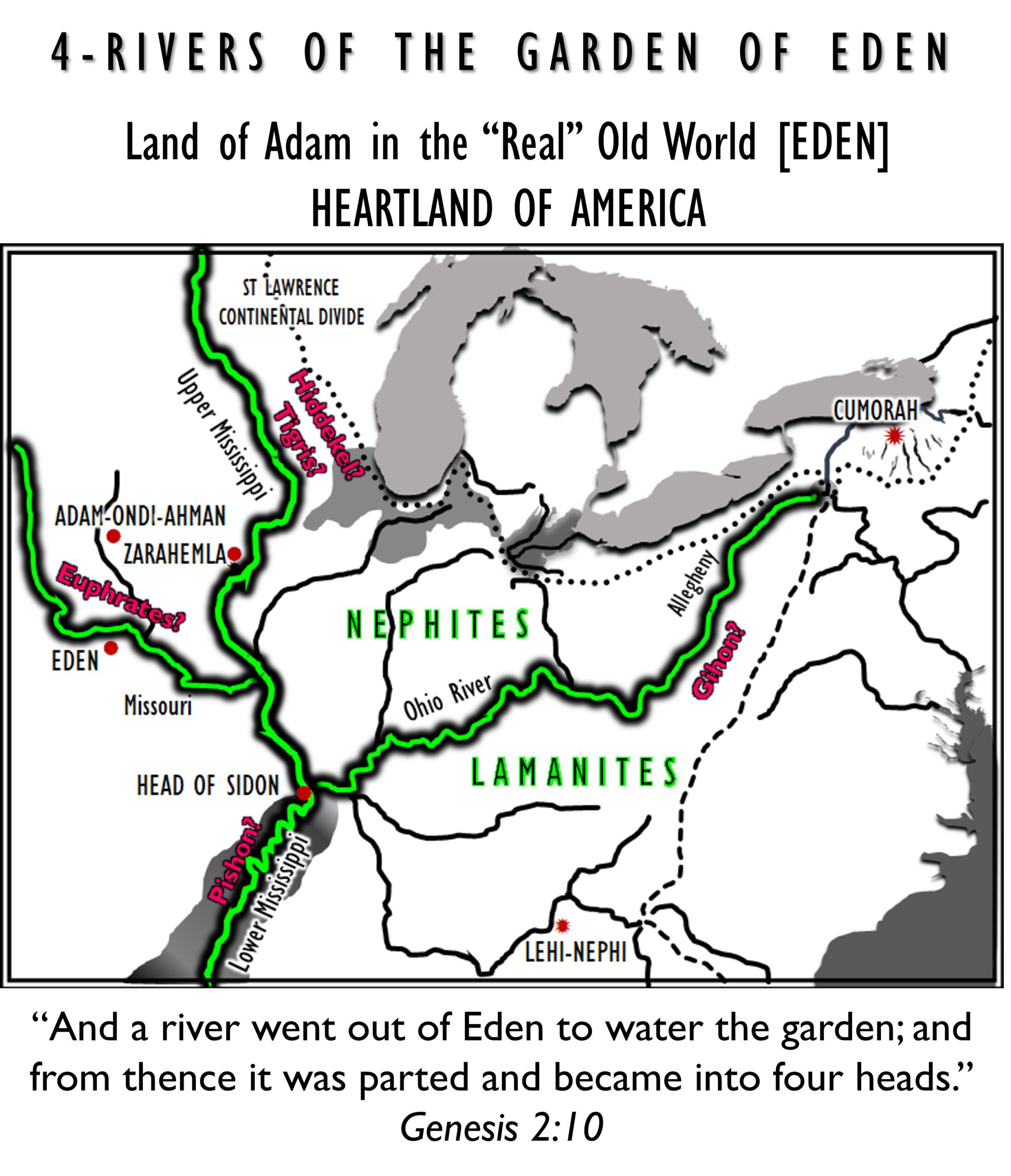
“When we read the book of Genesis we see that there was one river that entered the garden in order to water it, but then, while inside the garden, that river would be split into the heads of four rivers. These four rivers would then leave the garden to water four major places on earth.
Genesis 2:10-14 (WEB)
10 A river went out of Eden to water the garden; and from there it was parted, and became the source of four rivers.
11 The name of the first is Pishon: it flows through the whole land of Havilah, where there is gold;
12 and the gold of that land is good. Bdellium and onyx stone are also there.
13 The name of the second river is Gihon. It is the same river that flows through the whole land of Cush.
14 The name of the third river is Hiddekel. This is the one which flows in front of Assyria. The fourth river is the Euphrates.
The First shall be Last and the Last shall be First
The Lord has said, the first shall be last and the last shall be first. It makes sense that our life will begin and end at the same location, and this life also includes the events of the Book of Mormon happening in that same area. This is not a coincidence. The Lord has planned out our existence and life, before, during and after. Missouri is an important place in the Lord’s plans. This is so obvious that those who believe in other geography theories are in a great and spacious building. You just need common sense and the scriptures to determine that as Elder L. Tom Perry said, “The United States is the promised land foretold in the Book of Mormon—a place where divine guidance directed inspired men to create the conditions necessary for the Restoration of the gospel of Jesus Christ.” Elder L. Tom Perry Ensign Dec. 2012
When I type in a google search for, Where is the Garden of Eden? This is the first result:
Mesopotamia
The Garden of Eden is considered to be mythological by most scholars. [Wow this is how some of the same scholars feel about the Book of Mormon]. Among those who consider it to have been real, there have been various suggestions for its location: at the head of the Persian Gulf, in southern Mesopotamia (now Iraq) where the Tigris and Euphrates rivers run into the sea; and in Armenia.
Most Bible commentaries state that the site of the Garden of Eden was in the Middle East, situated somewhere near where the Tigris and Euphrates Rivers are today. This is to easy as the bible mentions the name Euphrates so I assume most scholars think it must be where that river named Euphrates is located today. We know that is silly to assume as their is Place in Lebanon called Sidon and the same as a River Sidon in the Book of Mormon. Names alone don’t tell location. Did you know there was an ancient of Memphis in Egypt and today there is a city not so ancient named Memphis, TN?
“The word Nephi may come from the Egyptian city of N-ph, transliterated into Hebrew as Noph, which appears in the Old Testament in several places, and translated into English as Memphis. Actually, Hebrew in Nephi’s day (600 BC) was written without vowels, so it would be nph in Egyptian letters transliterated into nph in Hebrew letters when the Egyptian city we now call Memphis was referred to in the Old Testament.” Smith’s Bible Dictionary
This is based on the description given in Genesis 2:8–14:The Lord God planted a garden eastward in Eden. . . . Now a river went out of Eden to water the garden, and from there it parted and became four riverheads. The name of the first is Pishon . . . . The name of the second river is Gihon. . . . The name of the third river is Hiddekel [Tigris]. ;. . . The fourth river is the Euphrates.
Mississippi 3- River Divisions
The importance of the Mississippi river in the history of the Native Americans goes without saying. It could be called three different rivers as explained below and it could be the four rivers described in Genesis flowing out of Eden. (More below)
The Mississippi River can be divided into three sections: the Upper Mississippi, the river from its headwaters to the confluence with the Missouri River; the Middle Mississippi, which is downriver from the Missouri to the Ohio River; and the Lower Mississippi, which flows from the Ohio to the Gulf of Mexico. Source
Named by Algonkian-speaking Indians, Mississippi can be translated as “Father of Waters.” The river, the largest in North America, drains 31 states and 2 Canadian provinces, and runs 2,350 miles from its source to the Gulf of Mexico. The Mississippi River is truly one of the great forces that has shaped the United States into the country it is today. Although its role has changed over the past few centuries, the Mississippi has always been important to those who lived along its banks.
Indigenous peoples fished its waters and depended on the waterway for transportation. Explorers and traders traveled the river in hopes of conquering more land and obtaining wealth for their countries. Settlers moved close to take advantage of the rich farmland the river provided. All of these pursuits resulted in a trade industry [Map Below] that brought about a social and economic transformation, when news and goods made their way downriver and livelihoods were provided. In fact, the Mississippi River’s economic and strategic value was so important that when Ulysses S. Grant won the siege of Vicksburg and control of the river during the Civil War, the Confederacy was dealt a serious blow. Today, although still used to transport goods, the river has taken on yet another identity: that of entertainer. Literature, pleasure boats, and floating casinos all showcase a new dimension of this magnificent river. https://www.arcadiapublishing.com/Products/9780738507453

Give these Four Rivers some thought:
The Maps below seems logical.
We know by revelation that the New Jerusalem and Adam-Ondi-Ahman are in Missouri. Before the earth was divided it existed together with no Atlantic Ocean between. It would make sense that if Adam was placed in Missouri that the 4-rivers spoken of in Genesis could be in or near Missouri. See the Map below as it shows the Head of Sidon near St. Louis, MO which very well could be this area in Genesis 2:10 that says, ““And a river went out of Eden to water the garden; and from thence it was parted and became into four heads.” These four rivers could be any of the ones shown below, Upper Mississippi, Lower Mississippi, Ohio/Allegheny, or the Missouri. It makes a lot of sense. I would rather find commonality in the Land of Missouri where we know by revelation it’s existence of Adam, and we have no idea about Mesopotamia, except by the commonality of the name Euphrates in the Bible and in Iraq today.

THE MOST MISUNDERSTOOD QUOTE BY MESOAMERICAN THEORISTS-
Here is the misquoted scripture from Joseph Smith. “You know there has been great discussion in relation to Zion–where it is, and where the gathering of the dispensation is, and which I am now going to tell you. The prophets have spoken and written upon it; but I will make a proclamation that will cover a broader ground. The whole of America is Zion itself from north to south.” President Joseph Smith’s Remarks–The Whole of America Zion–April Conference, 1844 Section Six 1843-44, p.362
Mesoamerican activists actually cite this above quote as evidence that the Book of Mormon took place in Central America. WRONG! The quote above does not mention North, South, or Central at all, but just “America.”
The United States of America has been and is truly great. It is the Promised Land of the Book of Mormon. Today it is receiving relentless attacks from some very unpatriotic and evil people. We are in a World War 3 cyber battle, and it is time to stand up and applaud the goodness of these United States.
We know this land will not be possessed by a disobedient people. We have time to save our land, but it is becoming a challenge. Prophets and Apostles have spoken of the Choice Land and the responsibility those of us who are citizens must act with more dignity, respect, honor, faith and righteousness than those living in any other country.
Not because we are better people, but because far more is expected of us. The penalty for our sin and disobedience will be far greater than those who live in other countries, as more is expected of us. We welcome all into the United States that want to come here legally, and adopt our way of life which is freedom to choose right or wrong and be willing to accept the blessings or the cursings for disobedience. Love our neighbor as ourselves, and above all Love the Lord our God with all our Heart, Might, Mind and Strength.
Find out about how to explain the Prophet Joseph Smith’s quote above. Complete Blog Here

Eden, Garden of; LDS Bible Dictionary
The home of our first parents, Adam and Eve (Gen. 2:8–3:24; 4:16; Isa. 51:3; 2 Ne. 2:19–25; Moses 3–4; Abr. 5), designated as a garden, eastward in Eden. Latter-day revelation confirms the biblical account of the Garden of Eden and adds the important information that it was located on what is now the North American continent. https://www.churchofjesuschrist.org/study/scriptures/bd/eden-garden-of?lang=eng
Missouri is Eden & New Jerusalem

”We must remember that the whole earth was paradisaical before the Fall. The Garden of Eden was a center place. After the Fall, there was no Garden of Eden or paradisaical status on earth. Yet relative to the locale of the site of the Garden of Eden, the Prophet Joseph Smith learned through revelation (D&C 57) that Jackson County was the location of a Zion to be and the New Jerusalem to come. The Prophet first visited Jackson County, Missouri, in the summer of 1831. The Prophet visited Jackson County again in April and May 1832. On one of the occasions, or perhaps both, the Prophet Joseph apparently instructed his close associates, and perhaps even a general Church gathering, that the ancient Garden of Eden was also located in Jackson County.” Bruce A. Van Orden, associate professor of Church history, Brigham Young University.
Heartland and Mesoamericanist Agree! Lehi Left Oman near Khor Kharfot
“When Lehi landed in the Promised land, it seems he found bounties of all kind, just as Adam and Eve had found in the garden of Eden. It makes sense that Lehi was upon the same land as Adam began his life, the area of the united States of America today.
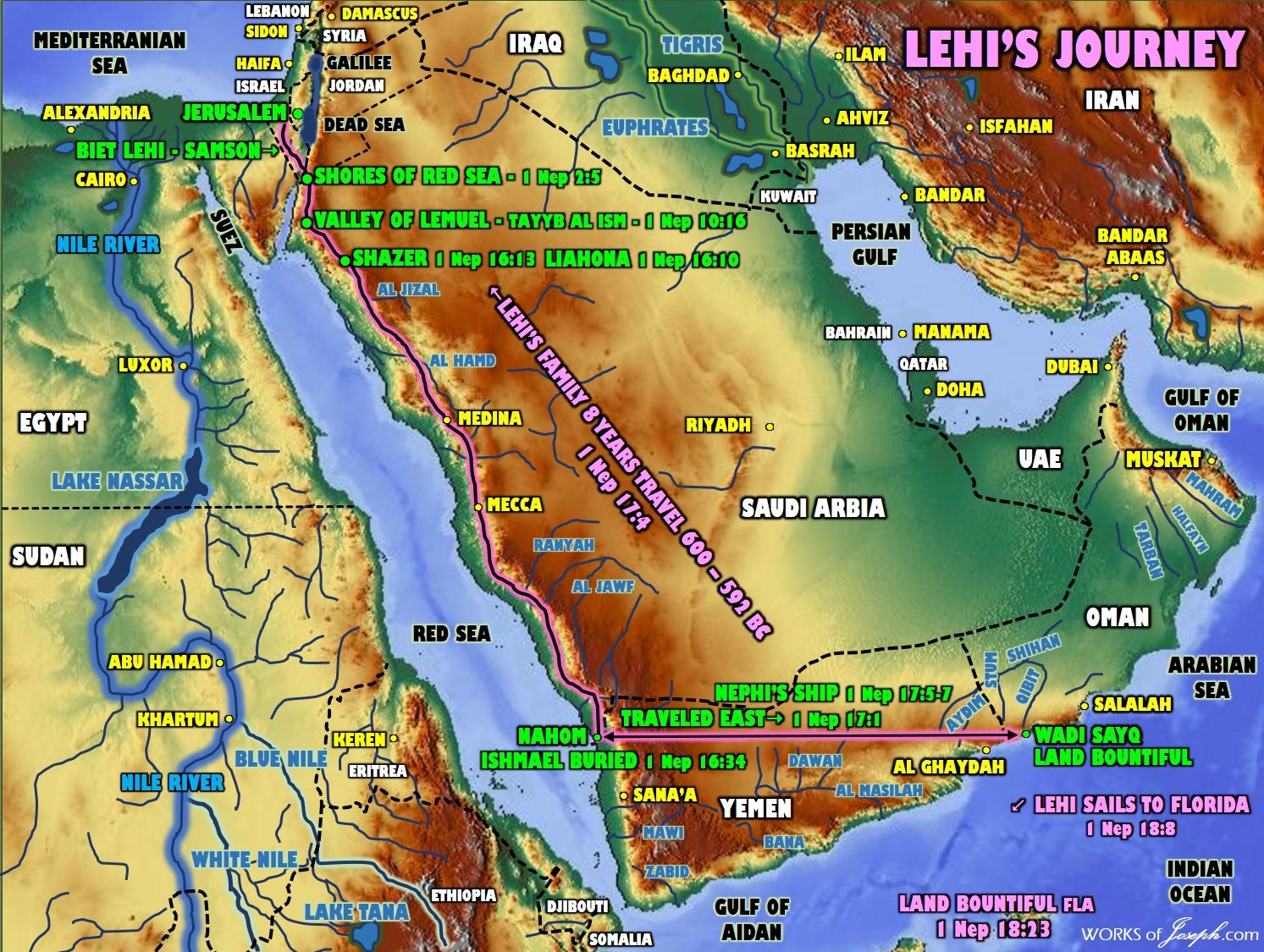
Both Mesoamericanists and Heartlanders believe the area of Khor Kharfot, Oman is the most likely place that Lehi came to the Land Bountiful on the Arabian Peninsula. See the list below of necessities this Khor Kharfot area has.
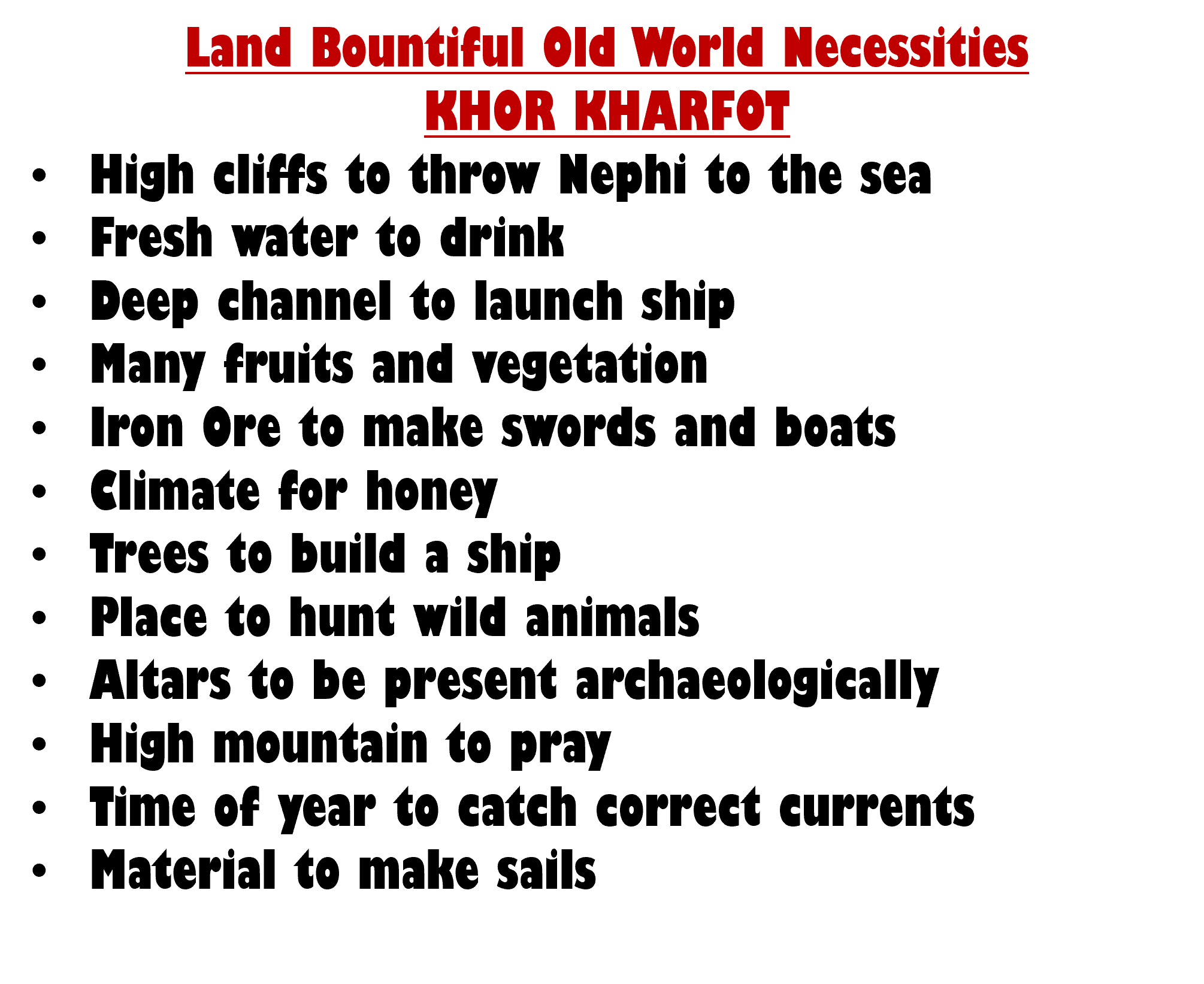 East on Pacific or West around Africa?
East on Pacific or West around Africa?
The place the Mesoamericanists and the Heartlanders disagree is the direction Lehi sailed from Khor Kharfot. Mesoamerican Theory says they traveled east around India and sailed across the great Pacific ocean. Our British Navy Captain Philip Beale of the Phoenicia Expedition says they could have gone the Pacific route, but it would take 18 months and there wouldn’t be any survivors on the ship.
Here are other reasons why Lehi would have gone around Africa and not towards the Pacific.
WHY APALACHICOLA FLORIDA IS PLAUSIBLE FOR THE LAND OF LEHI’S LANDING
Navigational Proof: Phoenicia 2009 and 2020 Expedition (Proof its possible to said a 600 BC ship from Oman to Florida). Length of voyage: 4-6 months vs. 14-18 months around the Pacific.
Time of Year: Leave in Sept or Oct. Land in March or April?
Archaeology: 500-700 BC Mounds and Relics at Tallahassee Florida. This is the location the Hopewell Civilization began, in Florida according to Historical Facts.
Bees and Honey: Apalachicola, FL, is one of the only places in the world for Tupelo Honey. Lehi and Jaredites brought Bees and used them in America.
Similar Latitude: Seeds would grow is similar latitudes of Jerusalem not in Mexico
30° 26′ 17″ N (Tallahassee, FL)
30° 04’42” N (Cairo, Egypt)
31° 46′ 48″ N (Jerusalem)
19° 43’ 26” N (Mexico City)
15° 30′ 0″ N (Guatemala)
Mostly Unoccupied Area: 2 Nephi 1:8/Not overrun. Nephi=King. If Nephi was in a highly populated area that had already been established, he would be a foreigner and not a king.
Wind Currents: Leaving Oman in Sept (honey & fruit ripe), wind currents flow toward horn of Africa. Jan to March wind would be towards India and the Pacific.
Promised Land: Book of Mormon speaks of a Land of Liberty. (36 others) USA, not Mesoamerica. No kings upon the land, a place of a Marvelous Work etc.
Abundance of Food: Oman and Florida both called “A” Land Bountiful
Same Land as Jaredites: [Cumorah and Ramah]
Food prehistoric people needed: Deer, small mammals, Turtles. Bison, Mammoths, Bear, Elk further north. What to eat in Mesoamerica? Monkeys, Llamas, lizards, Jaguar?
Signs of Hebrew writing or relics: Bat Creek Stone, Holy Stones, Hebrew Earthworks, Egyptian names of people and places.
Access to Rivers: Chattahoochee only river source brings ice into the gulf from Tennessee area. Rivers were the highways of the Nephites, not the jungle rivers.
The Heartland Theory say they sailed along the east coast of Africa and around the tip of Africa and the currents took Lehi’s ship directly towards Florida in about 3-5 months time.
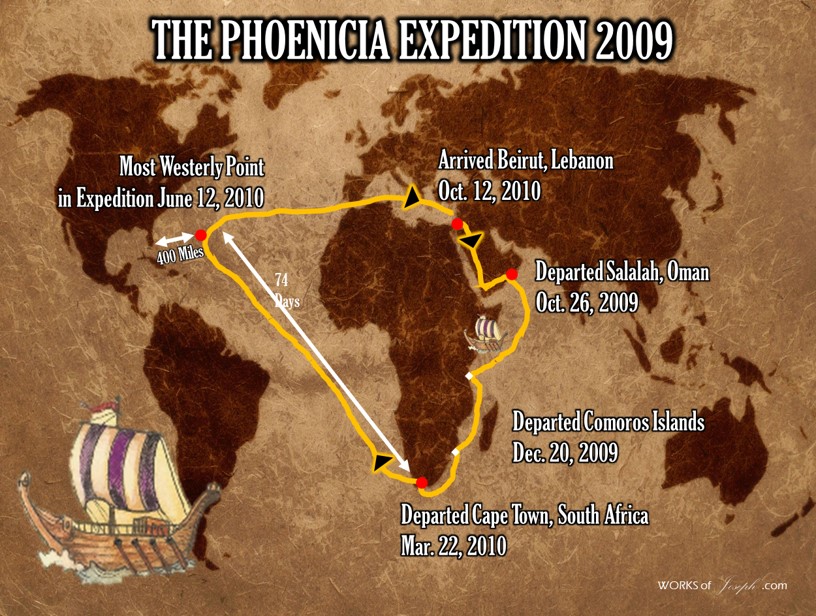
Janne Mattson Sjödahl
 Janne Mattson Sjödahl (29 November 1853 – 23 June 1939) was a Swedish convert to The Church of Jesus Christ of Latter-day Saints (LDS Church) and was the author of influential commentaries on LDS Church scriptures. Sjödahl was among the first commentators to advance a “limited geography model” for the theorized geography of the Book of Mormon.
Janne Mattson Sjödahl (29 November 1853 – 23 June 1939) was a Swedish convert to The Church of Jesus Christ of Latter-day Saints (LDS Church) and was the author of influential commentaries on LDS Church scriptures. Sjödahl was among the first commentators to advance a “limited geography model” for the theorized geography of the Book of Mormon.
In 1874, Sjödahl moved to England and enrolled in Spurgeon’s College in London, where he graduated with a degree in divinity in 1876. While in England, Sjödahl mastered English and also specialized in Greek and Hebrew. In addition to knowing Swedish and Norwegian from his childhood, Sjödahl would also master the German, Icelandic, and Arabic languages…
On 8 June 1886, Sjödahl was excommunicated from the Baptist Church, possibly on charges of adultery.[1] Around the same time, Sjödahl became associated with Ferdinand Friis Hintze, a Danish missionary from the LDS Church. Following his excommunication, Sjödahl travelled to Utah Territory to further investigate Mormonism. On the sea journey, his son Janne Jr. died.
After arriving in Utah Territory, Sjödahl settled in Sanpete County, where a large number of Scandinavian Latter-day Saints had settled. On 7 October 1886, Sjödahl was baptized into the LDS Church in Manti.
Life in Manti
Upon settling in Manti, Sjödahl became the editor of the Manti Sentinel newspaper.
When the LDS Church’s Manti Utah Temple was completed in May 1888, Sjödahl became the first individual to receive his Endowment in the new temple. On 30 May 1888, Sjödahl and Christina Christofferson were married in the Manti Temple by Apostle Francis M. Lyman; they were the first couple married in the new temple. His second wife died in 1910.
Church Translator and Missionary
In 1888, Sjödahl completed a church-approved translation of the LDS Church’s Doctrine and Covenants into Swedish. In 1927, Sjödahl translated the Pearl of Great Price into Swedish, and in 1935 he completed the third revised translation of the Book of Mormon into Swedish.
 Upon the completion of the translation, Sjödahl was asked by church president Wilford Woodruff to go on a mission to Palestine. In January 1889. Sjödahl arrived in Jaffa. He learned to speak Arabic and preached in Palestine for one year, organizing a branch of the church in Jaffa.[3] In January 1890, Sjödahl was asked to go to Bern, Switzerland to complete his mission. He arrived back in Utah Territory in July 1890.
Upon the completion of the translation, Sjödahl was asked by church president Wilford Woodruff to go on a mission to Palestine. In January 1889. Sjödahl arrived in Jaffa. He learned to speak Arabic and preached in Palestine for one year, organizing a branch of the church in Jaffa.[3] In January 1890, Sjödahl was asked to go to Bern, Switzerland to complete his mission. He arrived back in Utah Territory in July 1890.
Newspaper Editor and Publications
Upon returning to Utah, Sjödahl became employed by the Deseret News newspaper in Salt Lake City. From 1906 to 1914, Sjödahl was the chief editor of the newspaper. In 1914, Sjödahl returned to England and became an editor of the LDS Church’s Millennial Star in Liverpool.
In 1917, Sjödahl and LDS Church Apsotle Hyrum M. Smith, who was the president of the church’s European Mission, together worked on A Commentary on the Doctrine and Covenants. While Sjödahl wrote most of the text, it was reviewed and approved by Smith. When Doctrine and Covenants Commentary was first published in 1919 in Liverpool, it was a church-approved publication and only Smith was listed as an author. However, subsequent publication of Doctrine and Covenants Commentary have acknowledged Sjödahl as its coauthor. Doctrine and Covenants Commentary is still cited frequently by Latter-day Saint authors and commentators.
Upon returning to Utah in 1919, Sjödahl became an editor for the church’s Improvement Era magazine, in which he published more than 50 of his own articles. In 1920, Sjödahl worked with George F. Richards and James E. Talmage in revising the footnotes in the Book of Mormon; Sjödahl’s work was incorporated into the LDS Church’s 1920 English edition of that publication. In 1923 and 1924, he assisted Talmage in revising his church-approved book Articles of Faith.
An Introduction to the Study of the Book of Mormon
In 1927, Sjödahl published An Introduction to the Study of the Book of Mormon, an apologetic work and one of the founding works in the area of Book of Mormon studies. In this work, Sjödahl advanced an early version of the “limited geography model” of the Book of Mormon, one of the first authors to do so.
Sjödahl was also the editor of the LDS Church’s German, Danish–Norwegian, Dutch, and Swedish newspapers in Salt Lake City from 1919 until they ceased publication in 1935.
When Sjödahl died in 1939, he had partially completed an extensive commentary on the Book of Mormon. In 1955, Sjödahl’s material was taken by his son-in-law, Philip C. Reynolds, and combined with some materials by church general authority George Reynolds and published under their names the seven-volume Commentary on the Book of Mormon. In 1965, Philip Reynolds published under the same names Commentary on the Pearl of Great Price.
Publications
 George Reynolds and Janne M. Sjödahl (1955) (Philip C. Reynolds, ed.). Commentary on the Book of Mormon (7 vols.) (Salt Lake City, Utah: Deseret News Press)—— and —— (1965) (Philip C. Reynolds, ed.). Commentary on the Pearl of Great Price (Salt Lake City, Utah: Deseret News Press)Janne M. Sjödahl (1927). An Introduction to the Study of the Book of Mormon (Salt Lake City, Utah: Deseret News Press)
George Reynolds and Janne M. Sjödahl (1955) (Philip C. Reynolds, ed.). Commentary on the Book of Mormon (7 vols.) (Salt Lake City, Utah: Deseret News Press)—— and —— (1965) (Philip C. Reynolds, ed.). Commentary on the Pearl of Great Price (Salt Lake City, Utah: Deseret News Press)Janne M. Sjödahl (1927). An Introduction to the Study of the Book of Mormon (Salt Lake City, Utah: Deseret News Press)
—— (1913). The Reign of Antichrist, or, The Great Falling Away: A Study in Ecclesiastical History (Salt Lake City, Utah: Deseret News Press)
Hyrum M. Smith and Janne M. Sjödahl (1955, 2d ed.). The Doctrine and Covenants Containing Revelations Given to Joseph Smith Jr., the Prophet, with an Introduction and Historical and Exegetical Notes (Salt Lake City, Utah: Deseret News Press) [originally published in 1919 as A Commentary on the Doctrine and Covenants] source: Wikipedia
See my Blog Here about the stories in the D&C Commentary by Sjodahl and Hyrum Smith that support events of the Book of Mormon in North America
In 1927, Janne M. Sjödahl a Swedish immigrant and convert to the LDS church, wrote a book on one of the founding works in the area of Book of Mormon studies. In his book he said; “The Onondagas: These have special interest… It appears from this, that this warrior, Zelph, was an Onondaga, as well as a “white” Lamanite, and that the Onondagas (of New York), consequently must be of Lamanite lineage. It also appears that at least some of the mounds in the Ohio Valley were erected by the descendants of Lehi” J.M. Sjodahl, An Introduction to the Study of the Book of Mormon.
THE LATTER DAY SAINTS MILLENNIAL STAR THURSDAY, JANUARY 4, 1917, Editorial by J.M. Sjodahl, CONFIRMING THE BOOK OF MORMON.
“According to the belief of the Latter-day Saints, the American continents were inhabited before the Flood. Somewhere in America, they believe, Enoch built his marvelous city, which was taken from the earth before the deluge. Somewhere in that region, Noah built the ark, and preached the gospel of repentance, and from America he was carried across the mighty deep until the vessel in which he and his family had found safety rested on
Mount Ararat.
The Book of Mormon tells us that some of those who were engaged in the construction of the Tower of Babel and who were scattered over the face of the earth were brought to America. There they grew to become a mighty nation. In course of time, however, they became exceedingly wicked and destroyed each other. These people are known as the Jaredites.
The sacred record mentioned also tells us that about six hundred years before our era, the Lord brought another colony of settlers to America. They came from Jerusalem. They also increased, prospered, and became wicked. Like the Jaredites, they destroyed each other, and but few remained after their sanguinary wars. From these the Red Indians have descended.
The Book of Mormon teaches, then, that there has been communication between Asia and America during the past ages, and that the American ancient civilization, of which many marvelous monuments still remain, are of Semitic origin, influenced, however, by Egyptian culture. This is implied by Nephi, when he says that he makes his record in the language of his father, “which consists of the learning of the Jews and the language of the Egyptians,” and, when the circumstances of the time in which Lehi lived before he emigrated from Jerusalem are considered, it is easily understood that the Egyptian influence must have been considerable upon the Hebrew mind and intellectual life generally. He lived at a time when Babylonia and Egypt were striving for supremacy in Palestine, and when the shortsighted leaders of the people favored the Egyptians in preference to the Chaldean’s, to such an extreme degree that many of them fled to Egypt, when the army of Nebuchadnezzar approached their beloved city. They even forced Jeremiah to accompany them to Egypt. Under the circumstances it is natural that Egyptian influence should have had a strong hold on the leading men among the Jews, as indicated in the Book of Mormon.
Lately, scientists have been inclined to doubt our belief in this respect. They have tried to account for the similarity observed in the civilizations of the Old World and the New, by supposing that similar needs and circumstances in different parts of the world may well lead isolated groups of men to work out systems of civilization of the same type. How much this theory owes to a desire to disprove the Book of Mormon, no one knows. Even scientists may have their prejudices. It is all the more noteworthy that a recent contributor to Science (New York, August 11th. 1910), G. Elliot Smith, contends that the pre-columbian civilization of the Americas came from Egypt. He places the date of its exodus from that country at 900 B.C. A “cultural migration,” he thinks, took place at that time, which left its influence also in India, China, and Polynesia. On this theory the trek eastward from the Red Sea of Lehi and his company, would appear quite natural, though miraculously guided by divine power.” As quoted in the Literary Digest, September 9th, 1910, G. Elliot Smith writes”
“The proof of the reality of this great migration of culture, is provided, not merely by the identical geographical distribution of a very extensive series of curiously distinctive, and often utterly bizarre, customs and beliefs, the precise dates and circumstances of the origin of which are known in their parent countries, but by the fact that these strange ingredients are compounded in a definite and highly complex manner, to form an artificial cultural structure, which no theory of independent evolution can possibly explain, because chance played so large a part in building it up in its original home.
“For instance, it is quite conceivable (though, I believe, utterly opposed to the evidence at our disposal) that different people might, independently the one or the other, have invented the practices of mummification, building megalithic monuments, circumcision, tattooing, and terraced irrigation; evolved the stories of the petrification of human beings, the strange adventures of the dead in the underworld, and the divine origin of kings ; and adopted sun-worship.
But why should the people of America and Egypt who built megalithic monuments, build them in accordance with very definite plans compounded of Egyptian, Babylonian, Indian, and East Asiatic models ? And why should the same people who did so, also have their wives’ chins tattooed, their sons circumcised, their dead mummified ? Or why should it be the same people who worshiped the sun and adopted the curiously artificial winged-sun-and-serpent symbolism, who practiced terraced irrigation in precisely the same way, who made idols, and held similar beliefs regarding them, who had identical stories of the wanderings of the dead in the underworld?
“If any theory of evolution of customs and beliefs is adequate to explain the independent origin of each item in the extensive repertoire, either of the New Empire Egyptian or the pre-Columbian American civilization (which I deny), it is utterly inconceivable that the fortuitous combination of hundreds of utterly incongruous and fantastic elements could possibly have happened twice. It is idle to deny the completeness of the demonstration which the existence of such a civilization in America supplies of the fact that it was derived from the late New Empire Egyptian civilization, modified by Ethiopian, Mediterranean, West Asiatic, Indian, Indonesian, East Asiatic, and Polynesian influences. * * *
“All that I claim, then, is that the influence of Egypt was handed on from place to place ; that the links which all ethnologists recognize as genuine bonds of union can with equal certainty be joined up into a cultural chain uniting Egypt to America.
“In almost every one of the focal points along this great migration route the folklore of today has preserved legends of the culture heroes who introduced some one or other of the elements of this peculiarly distinctive civilization. * * *
“At every spot where they touched and tarried, whether on the coasts of Asia, the islands of the Pacific, or on the continent of America, the new culture took root and flourished in its own distinctive manner, as it was subjected to the influence of the aborigines or to that of later comers of other ideas and traditions ; and each place became a fresh focus from which the new knowledge continued to radiate for long ages after the primary inoculation.
“The first great cultural wave (or the series of waves of which it was composed) continued to flow for several centuries. It must have begun some time after 900 B.C., because the initial equipment of the great wanderers included practices which were not invented in Egypt until that time. The last of the series of ripples in the great wave set out from India just after the practice of cremation made its appearance there, for at the end of the series the custom of incinerating the dead made its appearance in Indonesia, Polynesia, Mexico, and elsewhere.” J.M. Sjodahl, CONFIRMING THE BOOK OF MORMON.

